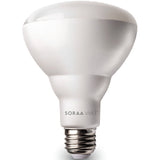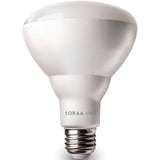Should You Pay Attention to Lumens or Watts for LED Bulbs?
Posted by Nick on for ProLampSales

Before the passage of the 2007 Energy Bill, it was easy to replace a general service household light bulb. All you had to do was read the number on the top of the bulb and find the exact replacement: 60 watts was always 60 watts.
But now, with common 40, 60, 75 and 100 watt incandescent bulbs no longer being manufactured for general purposes, consumers are being forced to change their thinking on lighting. This is one reason many manufacturers publish a Lighting Facts label for many new bulbs: to indicate to buyers what they are getting and how it compares to the light bulbs they purchased in the past.
Watts was a useful way to measure the relative light output of incandescent bulbs. It's easy to remember that a 60 watt bulb is brighter than a 40 watt bulb, but dimmer than a 100 watt bulb. And when almost all the bulbs were incandescent, it was really easy to know what you were getting. Nice, round numbers are easy to compare and contrast
The problem is that watts is a measure of energy used, rather than light output. So a 60 watt incandescent is equivalent to a 43 watt halogen, a 14 watt compact fluorescent, and a 10 watt LED. But good luck remembering that on your way to the home improvement store when you've already thrown away the burnt-out bulb. And just how are you supposed to compare a 9.5 watt LED to a 10 watt LED to an 11.5 watt LED when they all say they're 60 watt incandescent replacements? What is going on here?
This is a big reason why lumens has become the new watts. Lumens is a quantitative measure of the light output or brightness of a bulb. Because of the relative efficiency of LED and CFL bulbs, an incandescent may output 800 lumens at 60 watts, a CFL generates the same 800 lumens at 13 watts and an LED at only 10 watts.
In addition to light output, a light bulb's rated life is now something consumers should take into account when buying the new types of bulbs. Incandescent bulbs typically last around 1000 hours. Compare that to CFLs at 10,000 hours and LEDs at 25,000 hours. Of course CFLs and LEDs cost more than incandescent. But, when you realize you will have to buy 25 incandescent bulbs versus one LED, the higher cost of the LED looks a lot better, especially if you include the money saved on energy costs. In addition, the usual three- to five-year manufacturer warranties on LEDs can make the transition smoother.
When incandescent bulbs were ubiquitous in private households, watts was the easiest way to measure relative brightness. Whole generations raised on watts, though, will have to change the way they think about lighting, especially as common incandescent and halogen bulbs become harder to find. Likely, in a few years, the outcry over the "light bulb ban" will die down, as consumers get used to thinking in lumens and looking for the Lighting Facts label.
Featured Products (View All)
- 0 Comments
- Posted in Household, LED
0 Comments




